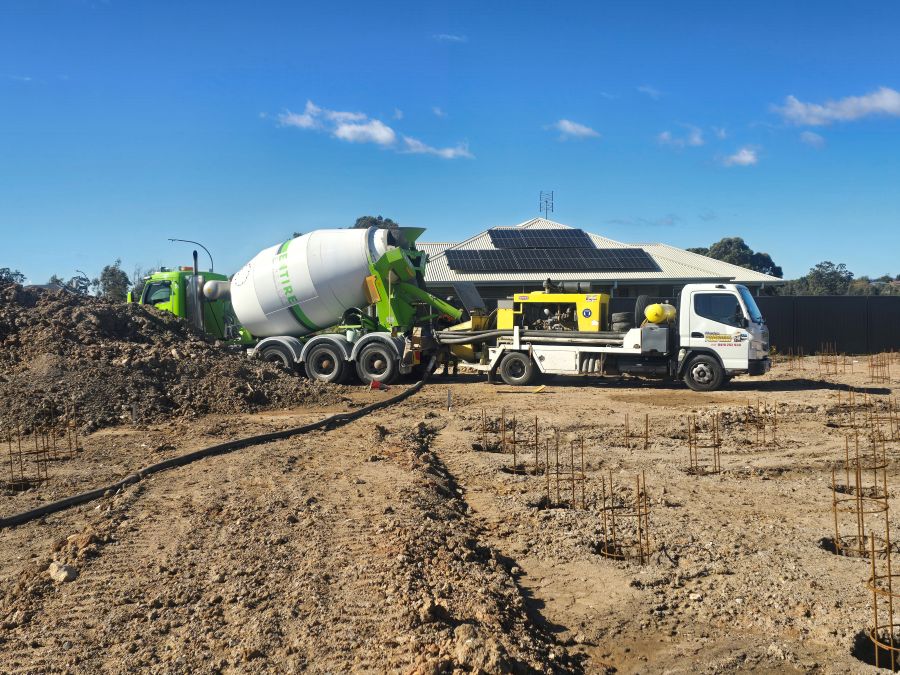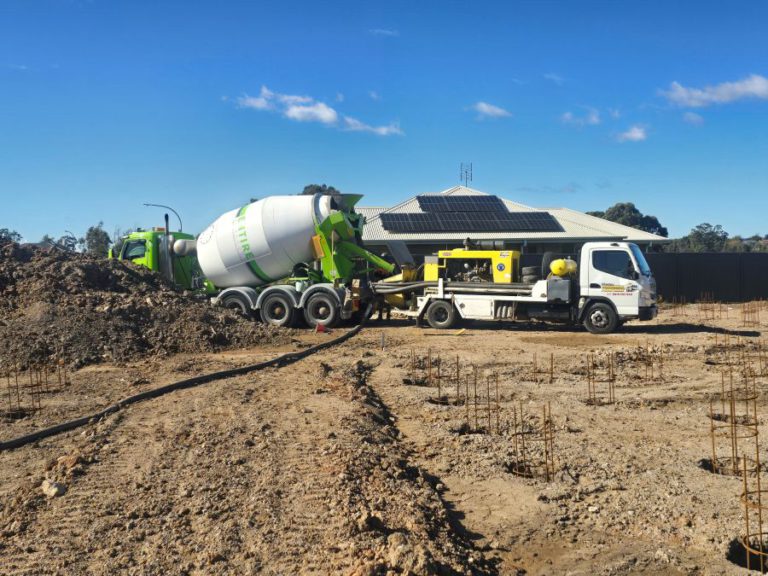Effective Strategies for Ensuring Safe and Efficient Concrete Pumping Operations in 2025
As we navigate the complexities of concrete pumping safety in 2025, it becomes increasingly crucial to highlight the significance of comprehensive training, detailed equipment inspections, clearly defined exclusion zones, and thorough pre-start planning. Recognising the inherent hazards associated with concrete pumping and strictly adhering to established safety protocols are pivotal steps in averting accidents, thereby facilitating a smooth and efficient progression of construction projects. By prioritising these fundamental safety measures, workers can foster a secure working environment that enhances both productivity and efficiency, ultimately laying a robust foundation for successful project completion.

Proactively Identifying and Mitigating Common Hazards in Concrete Pumping Operations
According to SafeWork NSW, both operators and team members involved in concrete placement encounter significant risks during the setup or operation of concrete pumps. The potential hazards include:
- Unstable ground conditions or improper setup on sloped surfaces, which can lead to severe accidents and injuries.
- Utilising equipment beyond its design specifications, substantially elevating the risk of mechanical failures and operational dangers.
- Proximity to overhead power lines, which presents serious electrocution hazards that must be managed effectively.
- Collisions with trucks, structures, or site personnel, potentially resulting in significant injuries and costly downtime.
- Hose whip and line surges, which can create perilous situations if not properly controlled and managed.
- Unanticipated equipment failures and blockages that can significantly disrupt operations and compromise safety.
- Exposure to crush zones, diesel fumes, and excessive noise levels, which can adversely affect health and wellbeing.
- Slip, trip, and confined space hazards that could lead to serious injuries, necessitating diligent oversight.
These risks are not merely theoretical; they often manifest when safety procedures are neglected or inadequately enforced. Therefore, our unwavering focus remains on critical safety aspects on-site, ensuring that every worker is well-informed and adheres to established protocols to foster a safer working environment.
1. Prioritise Training and Certification for Every Crew Member to Enhance Safety
Given the high-pressure nature of concrete pumps, stringent handling requirements for operators are absolutely essential. In NSW, it is imperative that operators possess:
- An HR licence for operating boom trucks, confirming their qualifications and competency in handling such machinery.
- Verified VOCs (Verification of Competency) to effectively validate their skill levels and operational knowledge.
- Training in hazard identification and a comprehensive understanding of emergency stop procedures, ensuring swift action in crisis scenarios.
Additionally, hose handlers must undergo extensive briefings to guarantee they avoid standing in discharge zones, allowing them to swiftly identify blockages—an essential practice for maintaining operational safety and preventing accidents from occurring.
2. Establish Exclusion Zones to Fortify Safety Protocols Effectively
Concrete under pressure moves rapidly and can become extremely hazardous if released unexpectedly. Therefore, it is crucial to establish clearly marked safety zones surrounding the hose and boom at all times. Key safety measures include:
- Utilising barriers and flagging to define risk areas around the pumping operation, preventing unauthorised access.
- Prohibiting personnel from standing in front of the discharge area to avert potential injuries from unexpected releases.
- Restricting movements beneath booms to mitigate the risk of accidents and ensure personnel safety at all times.
3. Perform Comprehensive Equipment Inspections Before Each Concrete Pour
Every concrete pumping job commences with a thorough equipment inspection. At Hunter Concrete Pumps, we execute detailed checks on:
- Hoses and reducers to confirm they are in optimal working condition and free from any defects that could compromise safety.
- Couplings and clamps to guarantee secure connections that can withstand operational pressure without failure.
- The integrity of the boom and seals, ensuring no leaks that could lead to hazardous situations during operation.
- Primer levels to ensure the pump operates smoothly and effectively throughout the task, preventing disruptions.
- Emergency shutoff systems to ensure immediate response capabilities in the event of an incident, reinforcing safety measures.
No operation begins without the pump passing all inspections successfully, underscoring our unwavering commitment to safety and operational efficiency across all projects, safeguarding both our crew and the integrity of the work.
4. Appoint a Lead Operator for Improved Coordination and Communication
Effective communication is vital for the success of concrete pumping operations. Each crew must designate one lead operator responsible for overseeing the pour and ensuring coordination with:
- Agitator drivers to synchronise operations for a seamless pour, minimising delays and ensuring quality control.
- Hose handlers who manage the flow of concrete safely and efficiently, avoiding potential blockages or misalignments.
- Site supervisors to ensure strict compliance with site regulations and safety standards, maintaining a secure work environment.
- Concreters and finishers to achieve the desired project outcomes and quality, ensuring the final product meets specifications.
This clear chain of command is essential for averting mistakes and misfires, ultimately enhancing both safety and operational efficiency throughout the project lifecycle.
5. Initiate Every Concrete Pour with a Detailed Safety Briefing
Prior to commencing pump operations, it is essential that the crew reviews several crucial topics, including:
- Site access and hose routing for effective flow management, ensuring a seamless operation.
- Emergency response plans and first aid protocols to ensure preparedness for any situation that may arise on site.
- Truck staging and washout procedures to maintain site cleanliness and orderliness, preventing accidents and ensuring regulatory compliance.
- Identifying slip hazards and ensuring the appropriate use of PPE (Personal Protective Equipment) for all crew members, reinforcing safety standards.
- Defining the roles of spotters where necessary to further enhance safety measures, ensuring everyone knows their responsibilities.
At Hunter Concrete Pumps, we implement these protocols rigorously for every job without exception, guaranteeing the safety of our crew and the integrity of the project at hand.
Recognising the Critical Importance of Safety in Concrete Pumping Operations
Ensuring safe concrete pours not only protects your crew but also safeguards your project timeline, budget, and overall reputation. A lapse in safety can result in injuries, project delays, or regulatory scrutiny—risks that simply cannot be ignored. We strictly adhere to the SafeWork NSW guidelines for concrete pumping on every job, reinforcing our commitment to excellence. Our operators are not only trained but also licensed and insured, assuring you that when you choose our services, you are opting for a provider that prioritises safety in every aspect of the process.
Is it Essential to Provide Spotters or Safety Personnel for My Concrete Pour?
For civil and commercial job sites, the answer is a resounding yes; spotters or safety personnel are crucial for upholding high safety standards. However, for residential projects, our dedicated pump crews are highly skilled in managing the safety zones effectively, ensuring the site remains secure at all times. We will communicate any specific requirements during the quoting process to ensure clarity and compliance with safety regulations, maintaining a focus on safety across all operations.
What Are the Most Common Safety Risks Associated with Concrete Pumping Jobs?
The three primary risks include untrained hose handling, inadequate access planning, and the absence of exclusion zones. We proactively address all three of these critical issues before the concrete pour commences, ensuring a safer working environment for everyone involved in the operation, thereby enhancing overall project safety and efficiency.
Enjoy Seamless and Safe Concrete Pours with Our Expertise and Commitment
Concrete pumping safety is not solely about adhering to strict regulations; rather, it emphasises ensuring that the job is completed without injuries or delays. When your team is well-trained in safety procedures and your operator arrives fully equipped and prepared, the concrete pour can proceed smoothly, swiftly, and without complications, paving the way for positive project outcomes and long-term success.
Concrete Pump Hire
The Article: Concrete Pumping Safety Protocols: 2025’s Top 5 Tips first appeared on https://writebuff.com
The Article Concrete Pumping Safety Tips: Top 5 Protocols for 2025 Was Found On https://limitsofstrategy.com




